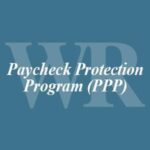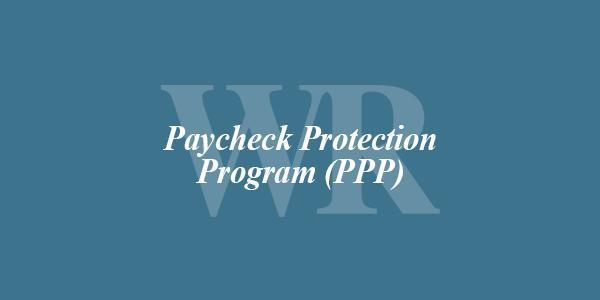
Senate Passes Paycheck Protection Program Flexibility Act; What Are the Changes?
June 9, 2020
PPP Update- New Forgiveness Applications
June 26, 2020PPPFA Signed and No More “Forgiveness Cliff”

On Friday, June 5th the President signed the PPP Flexibility Act (PPPFA) into law. Yesterday, Treasury Secretary Steven T. Mnuchin and SBA Administrator Jovita Carranza issued a joint statement regarding the PPPFA. That statement included a change from the initial interpretation of the bill and the “forgiveness cliff” was removed.
In our e-blast on Friday reviewing the changes included in the PPPFA, we included that the PPPFA changed the requirement that at least 75% of the forgiveness amount must be used for payroll costs to at least 60% of the loan amount must be used for payroll costs or there will be no forgiveness (“forgiveness cliff”). The joint statement removes this “forgiveness cliff.” A borrower not able to spend at least 60% of the loan amount on payroll costs will still be eligible for partial forgiveness, subject to at least 60% of the forgiveness amount is used for payroll costs. This change will help borrowers that cannot spend all of the money within the 8 or 24 week forgiveness periods.
As an example, let’s suppose a company received a $200k PPP loan. During their “covered period” (forgiveness period) they were only able to spend $60k on payroll costs. They would still be eligible and could apply for $100k forgiveness ($60k/0.6). The original forgiveness cliff wouldn’t have allowed them any forgiveness because they would have had to spend $120k ($200*0.6) in payroll costs or receive no forgiveness.
Please keep in mind that even if a borrower has funds remaining after the forgiveness period and wants/needs to use the funds and repay the loan, they are still required to spend the funds on qualified expenses and 60% must be used for payroll costs.
Note: A question we have frequently received since Friday and the PPPFA changes is whether FTE and wage benchmarks for forgiveness have to be kept for the full 24 weeks if a borrower uses the extended forgiveness period. At this point and until we receive guidance that says otherwise, we believe the answer is “yes.” If you will use the extended 24 week “covered period” for your loan and do not qualify for the Safe Harbor, you will need to maintain your FTE and wage benchmark levels for the 24 weeks.
Our team will continue to monitor all changes and updates related to PPP and will do our best to keep you apprised. As always, we are here to help and support you.
If you need assistance with your loan tracking or you would like to discuss your situation relative to PPP loan forgiveness, we are here to help. Reach out to your WR Partner or your relationship manager. You can also email our COVID-19 task force for assistance: COVID19TASKFORCE@websterrogers.com.


